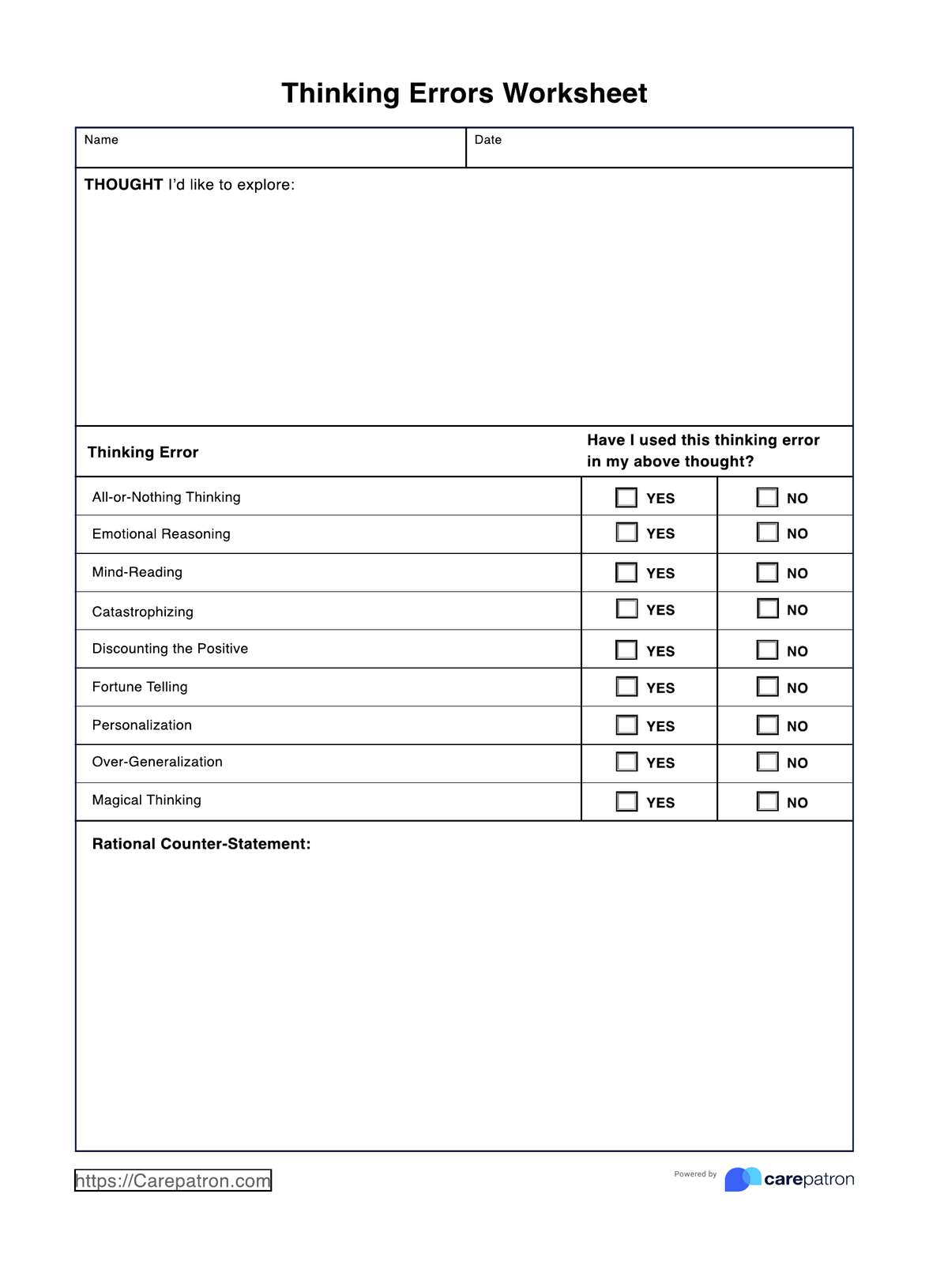No problem! We know there are lots of different types of thinking errors (also called cognitive distortions) and while we have included some of the most common with explanations, we have also left a blank space for your clients to add in any others they have discovered in their own thinking.

Thinking Errors Worksheets
Target your client’s cognitive distortions and give them the tools they need to recognize their unhelpful thinking patterns with our Thinking Errors Worksheet.
Thinking Errors Worksheets Template
Commonly asked questions
This worksheet is a versatile tool and can be completed in session with a mental health practitioner, or may also be assigned as therapy “homework” to allow more time to complete these exercises.
There’s no prerequisite for using this worksheet, other than having a thought your client wishes to explore and examine for cognitive distortions. Clients who may particularly benefit from these worksheets include those struggling with anxiety, negative thoughts, low self-esteem, depression or mood disorders, obsessive-compulsive disorder, intrusive thoughts, or any other cognitive issues that are negatively impacting their lives.
EHR and practice management software
Get started for free
*No credit card required
Free
$0/usd
Unlimited clients
Telehealth
1GB of storage
Client portal text
Automated billing and online payments











